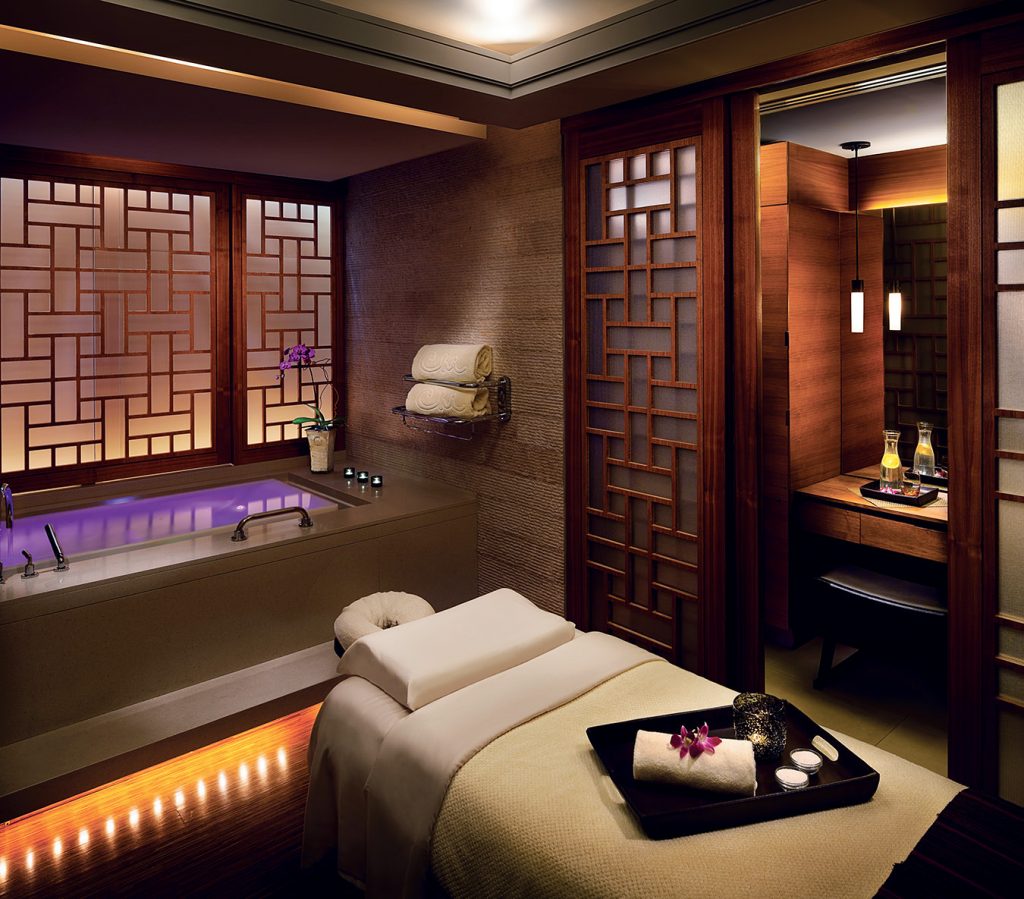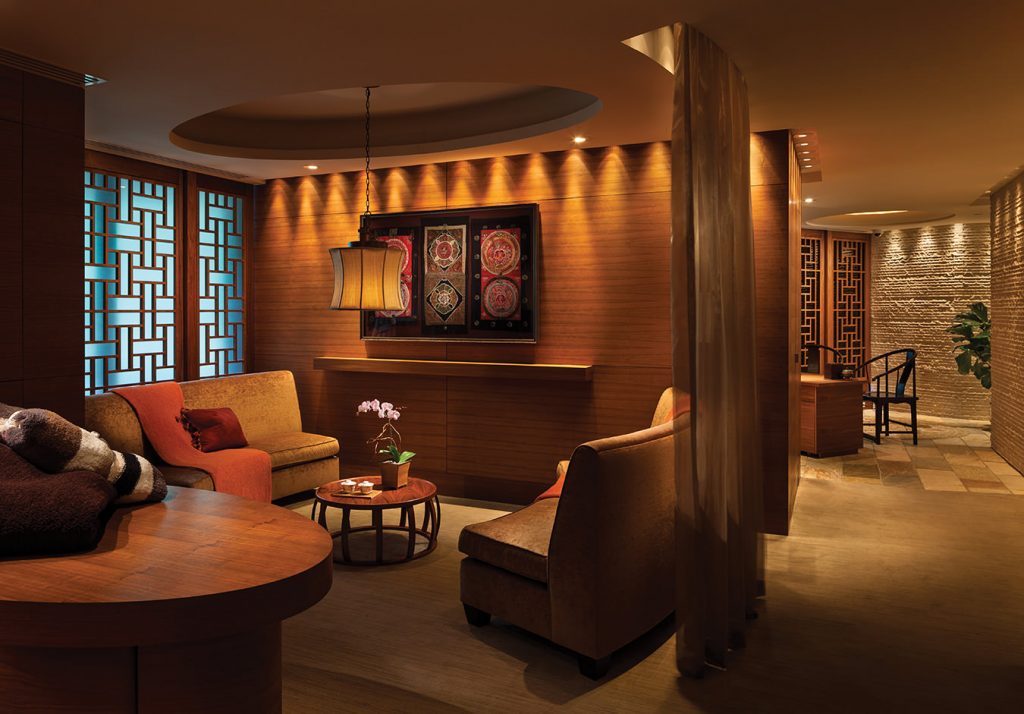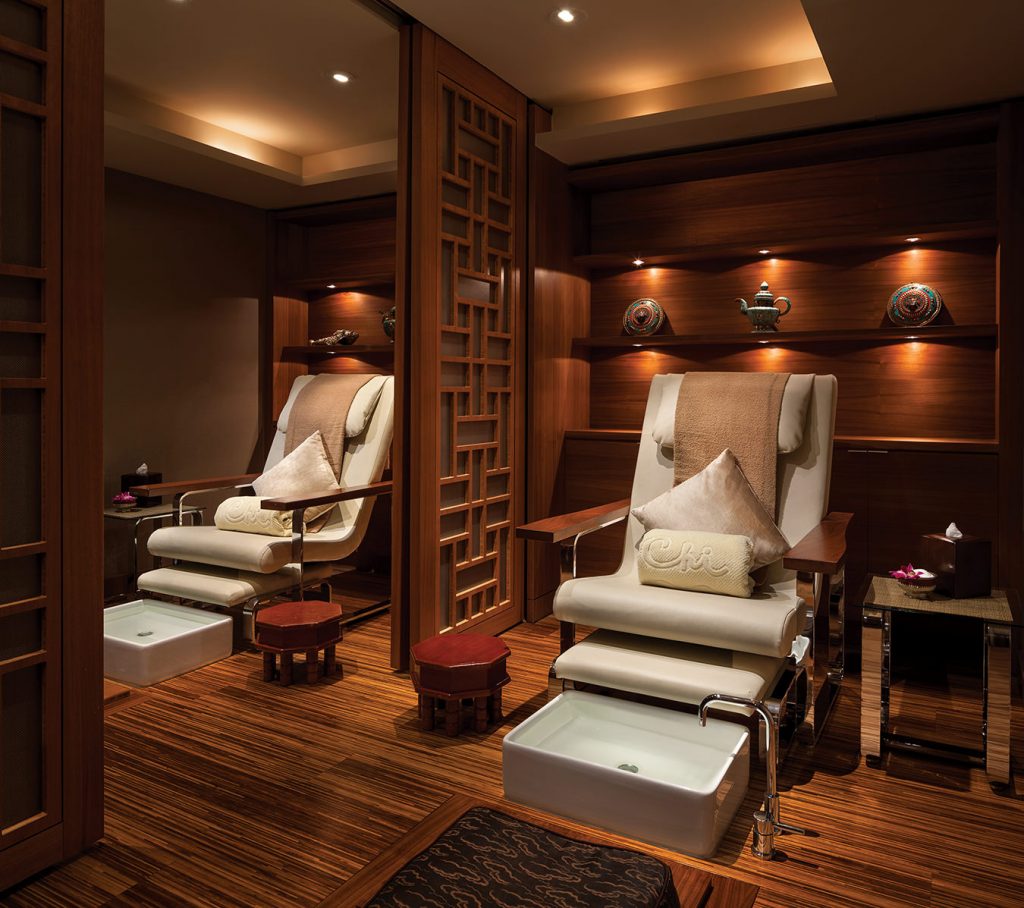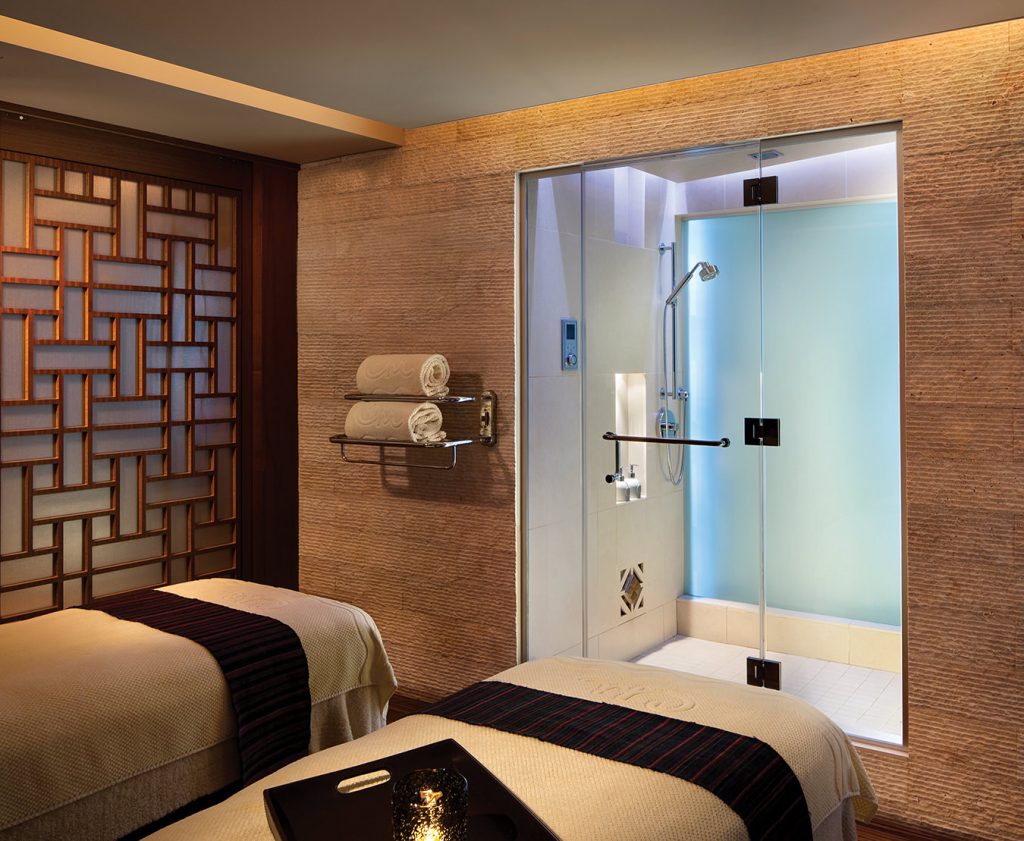In its most basic form, stretching is an instinctive exercise. After extended periods of inactivity—waking from sleep, sitting at a desk—a good stretch feels great. And although some studies now show that zealous stretching before a workout can actually hamper performance, stretching after physical activity helps muscles recover while maintaining flexibility.
Chi, the Spa at Shangri-La Hotel Vancouver, offers a set of three specialized Wushu Body Wisdom Massages—Toxin Release, Stress Relief, and Problem Areas. Inspired by the stretching and body-care methods of Chinese martial arts, these treatments were created following months of study at the remote Wudang Mountain with a wushu master and experts in traditional Chinese medicine.
Traditional Chinese medicine is one of the oldest healing systems in existence and continues to be practised today. According to its philosophy, the mind and body are an integrated whole that is also innately connected with nature. A primary principle states that when qi, or vital energy, flows freely along the body’s meridians, good health and personal vitality are maintained; however, blockages can occur, disrupting the flow of qi and causing illness or pain. “Meridians are like air ducts,” says Sheila Szeto, regional spa training manager at the Shangri-La Academy in Guangdong, China. “Tight and contracted muscles jam the spaces. Stretching helps by lengthening the muscles in the direction of the meridian line, and guided breathing alleviates the restricted spots. Together, this helps open the channels for qi to flow through freely.”
Traditional Chinese medicine also takes a preventative approach to health, rather than a curative or palliative one, and exercise is strongly encouraged. “In Chinese culture, we have many styles of martial arts. Some have more fighting power, and some are for internal wellness practices,” Szeto explains. “Taiji [tai chi] and qigong are the specific ones proven by masters and followers that are gentle for all to practise and improve health without doubt. Qigong stretching is in slow motion and relaxing in general. It is very effective for directing the flow of qi and improving circulation.” But the benefits don’t stop there. Practising qigong is also believed to boost the metabolism, massage the internal organs, relax joints, and steady the breath.
“Qigong stretching combines static actions with dynamic activities, so it is effective for regulating both yin and yang without damaging tendons and exhausting qi. The Baduanjin qigong we applied in our wushu stretching treatments can be dated back to the Song Dynasty, about 800 years ago, and it was studied by all students of traditional Chinese medicine to ensure that they were in good health to do their job,” Szeto says. Translated, Baduanjin means “eight pieces of brocade” or “eight silken movements”, and it consists of eight postures focusing on a different meridian.
Each massage treatment at Chi, the Spa at Shangri-La, begins in a spacious room with light, guided stretching in conjunction with breathing exercises designed to open the meridians. “Breathing is the essence of life and the basis for all martial arts,” Szeto says. Deep, focused breathing is meditative, quieting the mind while delivering fresh oxygen to the body. After a series of stretches, you’ll already begin feeling more limber. “The body is prepared, with softer muscles and tendons, to receive the massage,” she explains.
In the Toxin Release treatment, a bamboo rod is first used to assist in gentle stretches and then later rolled over muscles for an even distribution of pressure. For Stress Relief, wushu breathing techniques are exercised, followed by deep tissue and Tui Na massage to release muscular tension, promote circulation, and reactivate the flow of qi, thereby stimulating the body’s self-curative abilities. Tui Na, meaning “push and grasp”, is a form of Chinese manipulative therapy often used to treat and manage pain and injuries that arise during martial arts training. In Problem Areas, effleurage—a technique involving circular massage strokes—is used to warm the muscles. Energy blockages within the body are then located and released using acupoint and trigger point therapy to restore balance in the body.
Many aspects of traditional Chinese medicine remain rather mysterious, and there is still much to be learned about its approach. Its philosophy is based largely on a confidence in the body’s capacity for self-healing; practitioners firmly believe that, as a part of nature, we are capable of finding and achieving balance—but perhaps, once in a while, a little helping hand is needed to release the blockages that impede the flow of qi. It’s not that big of a stretch.











